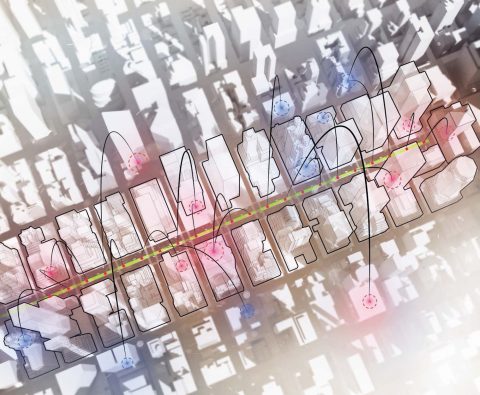
Commerce and culture have long been a powerful pairing. With its existing iconic status as one of New York’s most memorable boulevards and its history as a major center for commercial headquarters and leaders of business, we believe Park Avenue can be further activated with an overlay of creative-culture programming, using the centerline of Park Avenue as a means to engage, catalyze, and further activate the existing corporate edges – underutilized lobbies and plazas – of the immediate and surrounding district.
A New Cultural Community
The Park Avenue Residency Program
Long-term, this proposal envisions the “Park Avenue Residency Program,” an initiative to populate and activate Park Avenue with a constantly-evolving community of artists and creatives, directly engaging the arts, creative entrepreneurs, and cultural leaders with the district’s existing culture of commerce. Underwritten by the various corporate entities and property owners along Park Avenue, the Residency Program would bring the brightest creative thinkers together along this iconic New York axis.
Three spatial infrastructures would be needed to support the Residency Program: studio work spaces, exhibition and public engagement spaces, and places for the Creatives-in-Residence to live while in the program.
Inspired by Jefferson’s Academical Village and its ability to create an engaged community of creatives and intellectuals, this design re-activates Park Avenue’s centerline with a series of creative workspace pavilions – these “Magic Boxes” and the Green Garden that connects them – as a means to further engage, activate, and catalyze both the Avenue’s center and its existing edges with new public cultural programs.
A Three-Step Approach
The proposal creates both a long-term vision for the programmatic and geometric rejuvenation of this iconic urban axis, as well as a series of short-term, implementable goals that lead to the long-term vision.
The Dynamic Module
One Geometry / Multiple Solutions
The formal geometries envisioned for the Centerline are all derived from a single, dynamic module and harness the zero-waste and material efficiency capabilities of cutting-edge 3D technologies. The module itself can be 3D printed in a variety of materials. The studio pavilions’ modules are composed of glass or acrylic resin, while the horizontal modules within the planter beds/ventilation grids are composed of a ceramic or cementitious ultra-high-performance concrete. The formal geometry of the proposed planter beds allows for three overlapping functions: 1.) it further organizes the planting geometries of the Avenue’s planted landscapes, while also creating a visually impactful, beautiful horizontal texture in the winter; 2.) it creates a dynamic architectural lighting installation, calling attention to, or “tracing,” the movement of trains beneath pedestrians’ feet; and, 3.) it incorporates the ventilation needs of the train tunnels below in its single geometric module.











